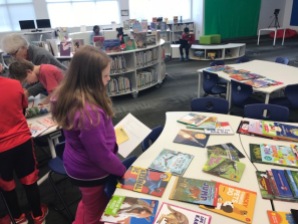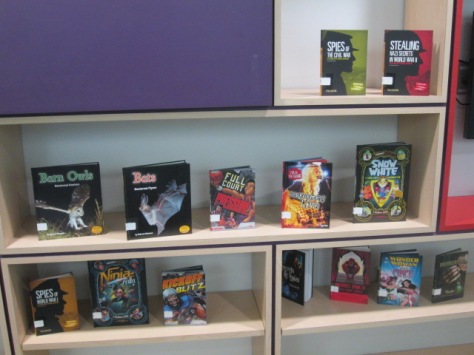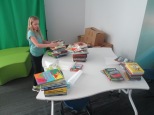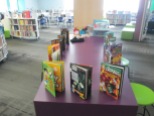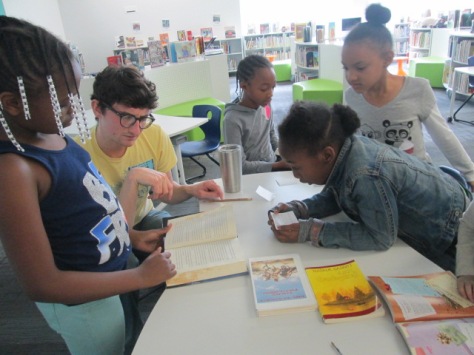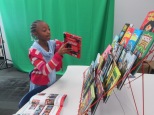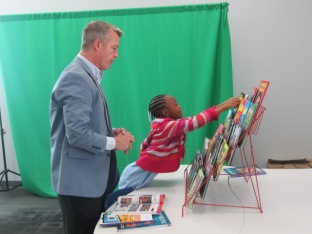

Our 2018-19 student book budget team is hard at work creating consideration lists of books for purchase. So far, they have created an interest survey, surveyed numerous students in our school, and set purchasing goals. I sent their goals to vendors and setup some appointments for vendors to meet with the team.

Our first vendor was Gret from Gumdrop Books. Gret brought in fiction and nonfiction and split them into separate groups on tables. She gave each student a pad of paper to write down item numbers for books or series they were interested in. They gave Gret each of their papers at the end of their time and then she put them into a consideration list in Excel. One of the things I love about what Gret does is that she has a printed list inside each book that shows other books in the series. Students can easily see if there are other books they are interested in.
Since Gret only had a sample of books to peruse, we had the Gumdrop website pulled up on the big screen so that Gret or students could search for books that weren’t represented on the tables. At the close of Gret’s time students in the 3 groups had made a list that totaled over $6,000! That’s not unusual for this group. It will become a good lesson later into how you get critical and purchase the very best of what you’ve found with the money you actually have.

Our second vendor was Jim Boon from Capstone. Jim has worked with us since the very beginning of this project. He’s great at bringing in a variety of books in fiction and nonfiction and splitting them into 2 displays that students can easily access. He also has catalogs and pens shipped to the school prior to his visit so that students can look through catalogs for books that aren’t found in his displays. Jim does a quick overview of what he has brought, how to use the catalogs, and any promotions Capstone currently has. Then, he spends time assisting students in looking at books and finding specifics in the catalogs.
My favorite feature in the Capstone catalog is the barcode listed on each series. Students can scan the barcode and it pulls up the entire series on the screen. Then, students can check the books they want to add to the list. It’s so much faster than having to write things down or bookmark pages in a catalog. Then, we can easily go into the list later to delete the books we don’t want.

Jim gets right in with the students and helps them find whatever they are looking for. He’s so fun and keeps them laughing and shopping. He even brought them a special treat bag to go with their Capstone pen and bookmarks.
Now, students have a lot of work to do after the break looking through their Capstone catalogs and cutting books from their Gumdrop list. Then, we’ll meet with one more vendor before making final decisions.
I love watching this group work and seeing what stands out to them.












